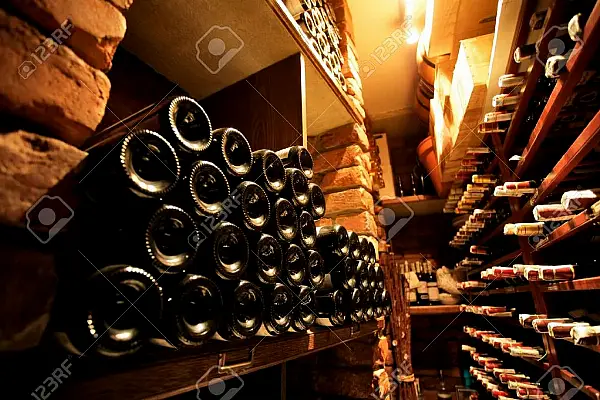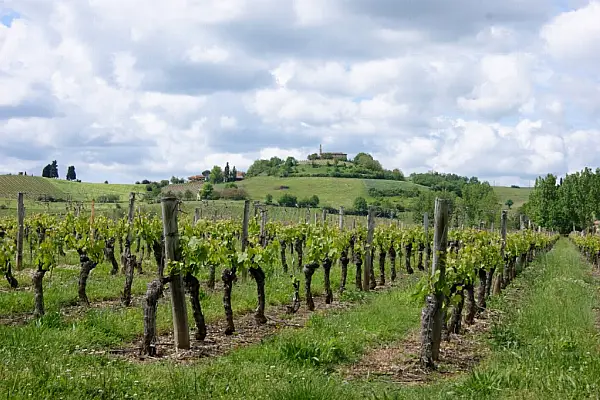It’s called spätburgunder in Germany. But just think of it as pinot noir with an umlaut.
If you’re picturing Germany as a place where only whites, especially rieslings, thrive, you’ve got it all wrong. Deutschland happens to be the third largest producer of pinot noir in the world—way ahead of trendy New World spots Oregon and New Zealand.
Now that prices are skyrocketing for the reds from hail-torn Burgundy, can those spätburgunders make their mark as a serious pinot alternative? Wine world buzz says yes.
They’ve crept onto some of New York’s best and hippest wine lists, at Michelin-starred places like Gramercy Tavern and Eleven Madison Park, last year's winner of the world's best wine list. Local importer Lyle Fass, who sells his finds direct to consumers, says his sales of German pinots are up more than 300 percent over the previous 12 months.
I realized it was time to reset my inner pinot compass after tasting about 25 top examples over the past month. I was blown away by the best wines’ rose petal and spice aromas, cool minerality, silky textures, and unique savory flavors. (Those are the kind of wine words I usually reserve for the Cote d’Or.) At $16 to $17, the basic everyday bottles are a better buy than many a Bourgogne Rouge, which usually hit near $30, and the best single vineyard bottles compare with premier cru Burgundies.
So why have these terrific reds been so under-the-radar?
Well, until a decade or so ago many of them were pretty ghastly, lean and mean, with the green pepper aromas you get in wines made from unripe grapes. Only in the past decade and a half has overall quality been rising, partly helped by planting better clones, using better barrels, cutting yields, and adapting winemaking techniques the globe-trotting younger generation learned in places like Burgundy, and partly helped by climate change.
Global warming has actually been good to German viticulture. Pinot noir vines are notoriously finicky; they ripen best where it’s cool but not too cool, within a narrow range of average growing season temperatures, from 57 to 61 degrees Fahrenheit. By 2030, Oregon and Burgundy will be at the upper limit of that. Germany, farther north of the equator, used to be too cold for pinot grapes to ripen every year, but with average temperatures up 1.4 degrees centigrade over the past 40 years, it’s now edging into the sweet spot.
Spätburgunder has a centuries-long history there, especially in the warmer southwest region of Baden just a short drive from Alsace, explains importer Rudi Wiest, who’s been banging the drum for these wines for years. Some Baden pinots from the 19th century had excellent reputations, and a few made by top producers in 1940s, '50s, and '60s are still alive today.
Yet in the 20th century few winemakers gave the grape much respect. How to make red wine wasn’t even taught at in university wine programs—which explains why some winemakers made the mistake of aging them too long in oak barrels in the late 1990s. Their wines had unpleasantly sharp, oaky flavors. A handful of stubborn pioneers took the grape’s rehabilitation seriously and toiled away making superb bottles by trial and error in warmer microclimates, while waiting for others to follow their lead and for the wines to be discovered by wine lovers outside Germany. Between 1990 and 2011 vineyard plantings of pinot doubled.
When a grand cru single vineyard German pinot noir from Meyer-Nakel winery won the International Trophy for Pinot Noir at the 2008 Decanter World Wine Awards, the wine world came looking.
Young talented winemakers entered the pinot sweepstakes, expanding vineyards into other regions, like the Ahr, Franconia, and the Pfalz, which are further north. The reds (and spätburgunder rosés) have been winning medals and competitions ever since.
An audience of wine lovers ready to experiment helped kick up awareness of the category, though importers and retailers in the U.S. find putting the words ‘pinot noir’ on the labels is essential for those drinkers with deep fears of gothic script and long German names. As Stephen Bitterolf of importer Vom Boden puts it, “The serious wine people are being priced out of the Burgundy market by the Masters of the Universe, so they’re looking beyond to anywhere that can deliver pinots with elegance that aren’t “silly-priced.” Germany, he says, is now where you can find them.
There’s only one problem: Importers say the wines are so popular in Germany there’s not a lot of the best to go around. But lucky for you, these bottles below have made it Stateside.









